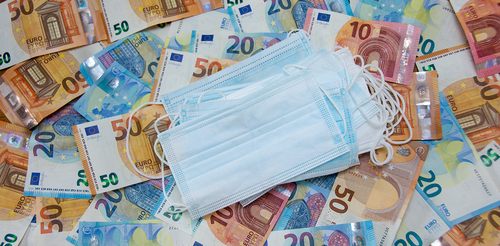The idea that more wealth for some will translate into more wealth for everyone has deep roots. Today, data shows that the gap between the richest and the poorest has never been wider.

Higher unemployment rates, gender disparity, income and wealth inequality: these are some of the side effects of the coronavirus pandemic. While a number of vaccines against Covid-19 was developed in record time, it might take decades to undo the social and economic damage caused by the virus. The crisis has exacerbated inequalities across all major fault lines in society and undone hard-won gains in poverty reduction across the globe.
Inequality is the gift the keeps on taking. While wealthy nations have been able to secure enough Covid-19 shots to inoculate their populations several times over, the People’s Vaccine Alliance—an international watchdog that includes Amnesty International, Oxfam and Global Justice—estimates that poor countries will only be able to vaccinate one in 10 people during 2021. Rich nations, needless to say, will be able to save more lives and help their economies recover faster.
But it is not just Covid. If no currency is more precious than time, it has been widely demonstrated that in nations with higher levels of inequality people live less. Yet, one should not make the mistake to conflate poverty and inequality. The United States is a very rich nation, but it also one of the most unequal, to the extent—according to pre-pandemic data from the World Health Organization—that its population live on average almost five years less than people living is some of the most equitable countries. It is worrisome to think, with the long-term effects on the health of coronavirus survivors still largely unknown, what the data on life expectancy will tell us years from now. What we know today is that the economic gaps among the population have only increased: while higher-paid workers have been able to work from home, many frontline lower-paid employees—with a disproportionately higher proportion of women affected—have been furloughed or laid off, and those who managed to keep their job often exposed themselves to an increased risk of getting infected. All the while, according to the Institute for Policy Studies, the total wealth of American billionaires grew to $4 trillion since the beginning of pandemic up until the end of 2020, over a $1 trillion gain.
While it is impossible to assess the severity of the diverse problems triggered by the global pandemic while they are still unraveling before our eyes, it is evident that the global health crisis has only compounded pre-existing challenges. In November, the World Inequality Lab—a research center based at the Paris School of Economics—released a massive update of global inequality data for 173 countries, making up 97% of the world population and 7.5 billion people. It provides a sobering picture of the state of global inequality right before the pandemic. With the top 10% of the population capturing respectively roughly 55% of the average national income, Latin America, the Middle East and Northern Africa, and Sub-Saharan Africa, stood out as the world’s most unequal regions in the world. In Russia and Ukraine, the top 10% seized a share equal to 47%, more than twice the quota of the bottom 50%. In Asia, within-country inequality has been rising dramatically since the 1980s to an average of 48.5%. When it comes to the two largest countries in the region, the top share of national income of the top 10% in India rose from 30% in the 1980s to over 56% today and in China from 28% to 41%. In the meantime, the concentration of incomes in the U.S. went up as well, from 34% to 45% among the richest 10% during the same time period. Europe remains the most equal of all regions, with the top 10% receiving over 35% of the national income—a result, the report explains, of public investments in education and health financed through redistribution mechanisms in the tax system.
“Global inequality data shows that rising inequality is not a fatality and that countries with strong investments in public services and welfare policies have the lowest inequality levels,” the researchers at the Lab point out. “Tackling inequality is a matter of political choice.” Making the right ones has never been as important as it is today.
|
Global Income Inequality 2021
|
|---|
| Region | National Income Top 1% Share | National Income Top 10% Share | National Income Bottom 50% Share | National Avg. (USD) | Population (Million) |
|---|---|---|---|---|---|
| Asia | 16.8 | 48.5 | 11.8 | 17,556 | 2,976 |
| Europe | 11.3 | 35.4 | 19.5 | 46,967 | 439 |
| Latin America | 24.6 | 54.4 | 10.1 | 20,442 | 436 |
| Middle East and North Africa | 22.9 | 55.8 | 12.1 | 30,982 | 302 |
| North America | 18.7 | 45.3 | 13.7 | 72,973 | 276 |
| Oceania | 14.5 | 39.1 | 11.3 | 43,579 | 29 |
| Russia and Ukraine | 21.6 | 47.0 | 15.8 | 25,457 | 149 |
| Sub-Saharan Africa | 20.2 | 55.1 | 9.8 | 7,771 | 520 |
Source: World Inequality Database, November 2020.
[ad_2]
Source

